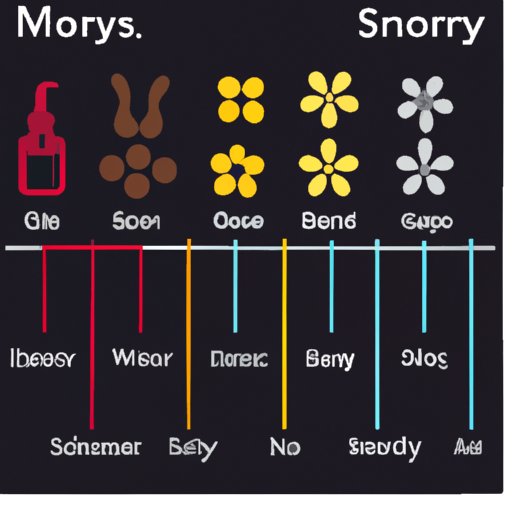Introduction
Our sense of smell is an incredibly powerful and important part of our lives. It allows us to detect and identify odors in our environment and can even evoke strong emotions and memories. But how does smelling work? In this article, we will explore the anatomy and significance of our sense of smell and gain a better understanding of how it works.

Exploring the Anatomy of Smell
The anatomy of smell begins with the olfactory system. This system consists of the olfactory epithelium, which is located in the upper part of the nasal cavity, and the olfactory nerves, which connect the olfactory epithelium to the brain. The olfactory epithelium is made up of olfactory receptor cells, which are responsible for detecting and recognizing odors.
These olfactory receptor cells contain specialized proteins known as odorant receptors, which bind to odor molecules in the air and send signals to the brain. Odor molecules are small, volatile compounds that are released by plants, animals, and other objects in the environment.
Investigating How Odor Molecules Activate Our Sense of Smell
In order to understand how odor molecules activate our sense of smell, it is important to first understand the structure of odor molecules. Odor molecules are composed of various atoms and molecules, such as carbon, hydrogen, nitrogen, and sulfur. These atoms and molecules are arranged in particular shapes and sizes, which allow them to interact with the odorant receptors in the olfactory epithelium.
Once an odor molecule binds to an odorant receptor, it triggers a chain reaction that sends a signal through the olfactory nerve to the brain. The brain then processes the signal and identifies the odor. This process occurs rapidly, allowing us to quickly detect and recognize odors in our environment.

Examining the Significance of Pheromones in Smelling
Pheromones are chemicals produced by animals that can affect the behavior or physiology of other animals. Although they are most commonly associated with attraction and communication between members of the same species, pheromones can also play a role in our sense of smell. Research has shown that certain pheromones can activate our olfactory receptor cells, leading to changes in behavior or physiology.
It is important to note that pheromones are not the only molecules that can activate our sense of smell. Other molecules, such as those found in food and perfume, are also capable of activating our olfactory receptor cells and triggering a response in the brain.
Analyzing How Smell is Linked to Memory and Emotion
Our sense of smell is closely linked to both memory and emotion. Studies have shown that certain smells can trigger vivid memories from our past, while others can evoke strong emotions, such as happiness or sadness. This is due to the fact that our brains are wired in such a way that certain smells can evoke memories or emotions more easily than other senses.
For example, the smell of freshly baked cookies may bring back fond memories of childhood, while the smell of a rose may evoke feelings of love and romance. Similarly, certain smells can trigger negative emotions, such as fear or anxiety.

Exploring the Link Between Smell and Taste
Smell and taste are closely linked senses. When we eat or drink something, our taste buds detect the flavor of the food or beverage and our nose detects the aroma. These two senses work together to create what we perceive as flavor. Without our sense of smell, our sense of taste would be significantly diminished.
The aroma of food or beverages can also play a role in how much we enjoy them. For example, a food may taste unpleasant but if it has a pleasant aroma, we may still find it enjoyable. This is because our brains associate certain aromas with certain flavors, making them more appealing.
Conclusion
In conclusion, our sense of smell is an incredibly complex and fascinating part of our lives. We have explored the anatomy of smell, including the role of olfactory receptors and odor molecules, as well as the significance of pheromones in smelling. We have also examined how smell is linked to memory and emotion, and explored the link between smell and taste.
By understanding how smelling works, we can better appreciate the power and importance of this sense. There is still much to learn about the sense of smell, and further research and exploration is needed to gain a deeper understanding of this fascinating sense.
(Note: Is this article not meeting your expectations? Do you have knowledge or insights to share? Unlock new opportunities and expand your reach by joining our authors team. Click Registration to join us and share your expertise with our readers.)
